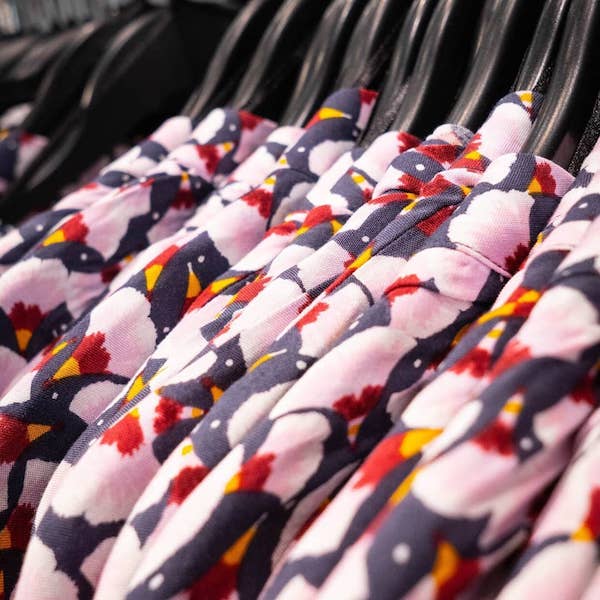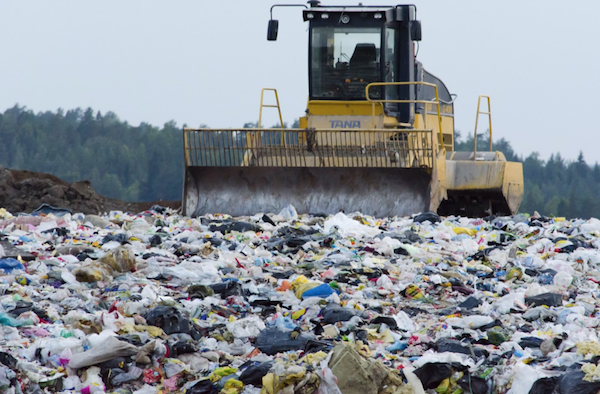Some clothes end up in your closet. Some end up in consignment stores. Others make their way to landfills. And some perfectly good items are burned.
Last July, luxury British brand Burberry made headlines – and faced major backlash – when it announced that it had burned about $37 million dollars of unsold clothing and cosmetics. The reasoning behind it? They wanted to maintain the company’s brand value by preventing the items from being stolen or sold for vastly reduced prices.
In response to the backlash (#burnberry became a hashtag and people vowed to boycott the company), Burberry said at the time that all goods were burned in an ethical manner and that the energy created from the burning items was captured.

By September, however, the company said it would stop the practice immediately, becoming the first to publicly declare such a thing. “Modern luxury means being socially and environmentally responsible,” said Burberry chief executive Marco Gobbetti in a statement at the time. The company said it would shift to recycle, repair, or donate items that can’t be sold. In the same statement, the company also vowed to stop using real fur.
The thing is – unbeknownst to many – burning goods is a common practice in the retail world, it’s just not widely publicized, as brands are not obligated to disclose such information.
Luxury brands may feel like markdowns or messy sales racks will decrease the exclusivity factor that they so pride themselves on. Other major retail players who have been accused of burning stock include Louis Vuitton (a label that, like Chanel, never goes on sale) and Nike. A 2017 New York Times article called out Nike for slashing its shoes and attire before getting rid of them. Even brands like H&M and Urban Outfitters have allegedly burned its clothes.

Last year, it was revealed that H&M burned 60 tonnes of goods since 2013, something the company denied at the time. In their defence, H&M claimed that the items burned contained unsafe chemicals or mold – something that has yet to be proven.
Recycling goods invites the possibility of them being stolen and sold on the black market, according to a piece by Forbes. An argument for the practice is that burning or destroying clothes prevents against counterfeiting, compromising the brand’s intellectual property. If the cheaply priced goods get in the wrong hands it can be easily replicated (especially designer handbags, for example), often in a manner where workers are exploited for their labour and forced to work in sub-par conditions. Fair enough. But problem is, of course, that burning clothes contributes to negative impact on the environment at a time when fast fashion is already dumping clothes in landfills at a disturbing rate.

An alarming 92-million tonnes of solid waste is dumped into landfills each year, according to the Copenhagen Fashion Summit.
Furthermore, the fashion industry is also the second-biggest consumer of water and a massive culprit when it comes to generating greenhouse gas emissions. Not to mention, supply chain logistics of creating clothing in the first place produces an incredible amount of waste. When you’re dealing with things like synthetic materials and plastics, there is no environmentally friendly way to burn clothes, let’s be honest.

So, what’s the solution?
In the Burberry backlash frenzy, the brand’s shareholders questioned why the unsold products weren’t offered to the company shareholders. While that’s one way of dealing with overstock, so is – wait for it – not producing so much in the first place, something that consumes an incredible amount of natural resources itself.
While the iconic British label may not burn anymore items, that doesn’t mean other brands will follow suit, especially when they are not required to disclose information related to the practice. To have a real impact, the entire clothes-burning practice needs to go up in smoke.
Featured image: pxhere
Articles You Might Be Interested In:
Buyer Beware: Here’s How Some Retailers Are Holding Your Returns Against You
How Chinese Retailers Of Counterfeit Goods Are Able To Bend The Law
The Truth About Our Fast Fashion Habits Is Ugly
Loyalty Memberships Are The Future Of Shopping
People Are Allegedly Getting Paid To Write Fake Amazon Reviews
